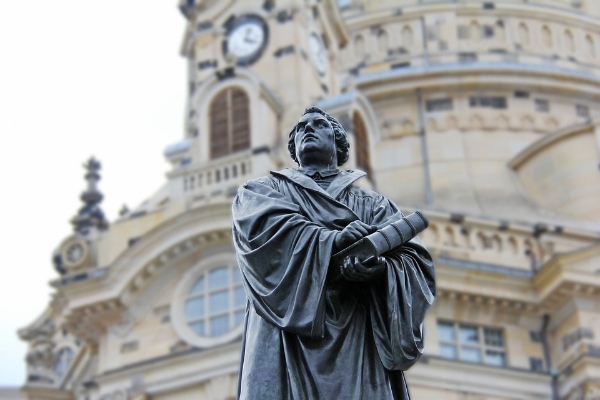Martin Luther. He is the colorful and dynamic man whose brilliant mind, pastoral heart, and witty pen ushered in the Protestant Reformation nearly five hundred years ago. His fresh interpretations of Scripture shattered the paradigms of his day—creating momentous shifts religiously, culturally, and even politically. Any of us who attend a church other than the Catholic or Orthodox have Luther to thank.
We hear stories about Luther nailing the Ninety-Five Theses to the door of Wittenberg’s Castle Church (although whether the nailing actually occurred is still up for debate). We hear of his brave stand at the Diet of Worms, lifting up Scripture as his ultimate authority of truth and conduct. In these episodes, he plays the part of the fearless leader—strong, bold, sure.
We do not often hear stories of his life as a monk and priest, before his Reformation shift. Luther once said, looking back, “If ever a monk got to heaven by monkery, I would have gotten there.” The young monk Luther took the religious life seriously, doing all that was required and more. He was even chastised at times by his mentor for confessing too minute of sins and adhering to too strict of penance for them. He was obsessed with living a holy life. And he was terrified.
The first time Luther was to preside over the Mass, he was convinced he would do something wrong and God would strike him dead on the spot. His anxiety caused his hands to shake so badly he nearly spilt the Communion wine. (To put that in perspective, the average churchgoer at the time was not allowed to receive the wine, because church leaders were afraid of it being spilt, as they viewed it as literally the blood of Jesus. Spilling the Communion wine was a big no-no.)
Luther lived in terror of God, hyper-aware of his sin, convinced he would never be saved. Enter his beloved confessor, mentor, and friend, Johann von Staupitz. Luther would later call Staupitz the Father of the Reformation and claim “he started the whole thing.”
We don’t hear of this unsung hero of the Reformation, whose patience, concern, and deep love of Scripture pushed Luther to rediscover the Gospel. Staupitz gave Luther a Bible and pointed his eyes away from his own unworthiness to Jesus on the Cross. To Luther’s crippling fears, to his guilt and feelings of never measuring up, to the penance and punishment he derived for himself, to his visions of Christ only as a Judge ready to smite him, Staupitz had a clear resounding refrain: “Look to the wounds of Christ.”
Although Luther would continue to battle his own anxiety and depression for the rest of his life, he now had an anchor to hold him fast – the all-consuming grace of God, poured out in Jesus’ blood on the Cross. No more striving. No more trying to win his approval. No more fear of judgment and damnation. Instead, the free forgiveness of sins, the righteousness of God given to us, and…freedom.
Look to the wounds of Christ. Look at the blood Christ shed for you; it is there the grace of God will appear to you.










